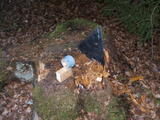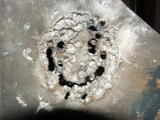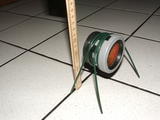








 ( and if maybe a video)
( and if maybe a video) 












| Quote: |
| Quote: |



 (difference in liner thickness along the base of the cone). This caused the round scratches on the mandrel as you can
see in the first pictures. Needless to say that these were also cut into the liner, but fotunately not as deep as in the mandrel.
(difference in liner thickness along the base of the cone). This caused the round scratches on the mandrel as you can
see in the first pictures. Needless to say that these were also cut into the liner, but fotunately not as deep as in the mandrel.| Quote: |
| Quote: |
 ' could acheive a high degree of manufacturing excellence
(fucken hell, beat out a shallow copper bowl and mount it backwards).
' could acheive a high degree of manufacturing excellence
(fucken hell, beat out a shallow copper bowl and mount it backwards).
| Quote: |




 But the fact that I
haven't been able to construct perfect cones probably doesn't help
But the fact that I
haven't been able to construct perfect cones probably doesn't help 



| Quote: |
| Quote: |



Quote: Originally posted by grndpndr  |
